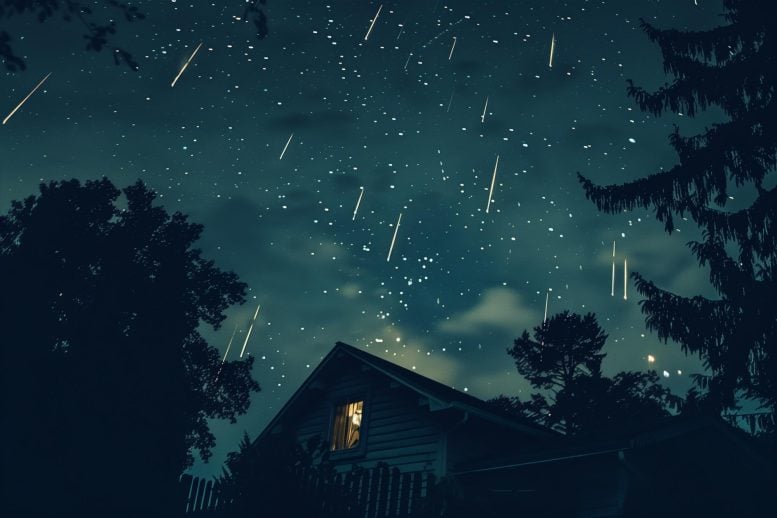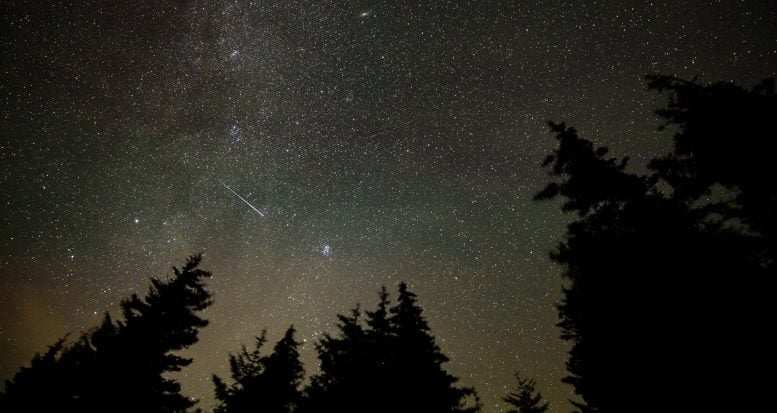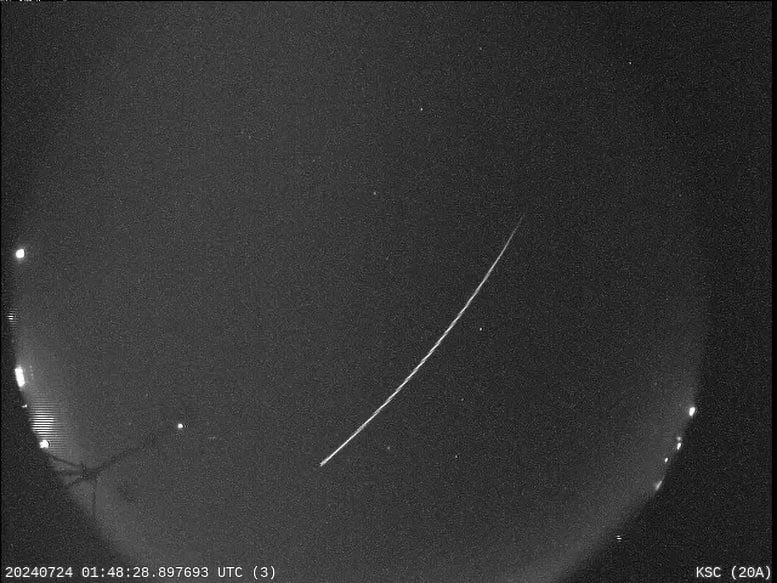
Every August, the Perseid meteor shower offers a breathtaking display of bright meteors and fireballs, best seen in the early hours of August 12. The meteors, which reach atmospheric speeds of up to 132,000 mph (212,000 km/h), are part of a show originating from the comet Swift-Tuttle. Credit: SciTechDaily.com
The Perseids, an annual meteor shower caused by debris from Comet Swift-Tuttle, provide a brilliant spectacle of meteors and fireballs every August.
The best time to observe the meteors is between midnight and dawn on August 12, which requires dark skies and an adjustment period for the eyes. The speed of these meteors can reach up to 212,000 km/h, creating breathtaking light displays in the night sky.
The Perseid meteor shower: a celestial spectacle
They may not get as much attention as the fireball that occurred over New York City last month, but amateur astronomers can still expect to see shooting stars with the upcoming Perseid meteor shower. Caused by Earth passing through debris trails left by Comet Swift-Tuttle, the shower has become famous over the centuries for its constant display of celestial fireworks.
“The Perseids are the best annual meteor shower for the casual stargazer,” said Bill Cooke, who directs NASAThe agency’s Meteoroid Environment Office at Marshall Space Flight Center in Huntsville, Alabama. “Not only is the shower rich in bright meteors and fireballs — number one, in fact — but it also peaks in mid-August, when the weather is still warm and pleasant. This year, the Perseids will peak on the night of August 11 and before dawn on August 12. You’ll start seeing meteors from the shower around 11 p.m. local time, and rates will increase through dawn. If you miss the night of the 11th, you may also see a number on the night of the 12th between those times.”

In this 30-second image, a meteor can be seen streaking across the sky during the annual Perseid meteor shower on Wednesday, Aug. 11, 2021, in Spruce Knob, West Virginia. Credit: NASA/Bill Ingalls
Optimal Observing Tips for Amateur Astronomers
The best way to view the Perseids is to find the darkest sky possible and go there between midnight and dawn on the morning of August 12. Allow about 45 minutes for your eyes to adjust to the darkness. Lie on your back and look straight up. Avoid looking at cell phones or tablets, as their bright screens can disrupt night vision and distract your eyes from the sky.
The Perseid meteors travel at a dizzying speed of 212,000 km/h, 500 times faster than the world’s fastest car. At this speed, even a tiny speck of dust produces a bright streak of light when it collides with the Earth’s atmosphere. Maximum temperatures can exceed 1,500 °C. Fahrenheit As they speed across the sky, the Perseids pose no danger to people on the ground, as they burn up nearly all of them 60 miles (96 kilometers) above our planet.
The first Perseid captured by NASA’s All Sky Meteor Camera network was recorded at 9:48 p.m. EDT July 23. The meteor – about as bright as the planet Jupiterso not bright enough to be considered a fireball – was caused by a piece of Comet Swift-Tuttle about 5 millimeters in diameter entering the atmosphere over the Atlantic and burning up 66 miles above St. Cloud, Florida, just south of Orlando.

NASA’s All Sky Meteor Camera Network captured its first Perseid at 9:48 p.m. EDT on July 23. Credit: NASA
Fireball in broad daylight: a rare event in New York
It wasn’t part of the Perseids, but a rare daytime fireball streaked across the New York sky at 11:15 a.m. EDT on Tuesday, July 16. The event garnered national attention and was reported in media outlets across the United States.
The fireball, defined as a meteor brighter than the planet Venus, is believed to have passed over New York City before traveling a short distance southwest and disintegrating about 30 miles (50 kilometers) above Mountainside, New Jersey. Cooke said the meteor was likely about 12 inches (30 centimeters) in diameter, which would have made the rock bright enough to be seen during the day. Seeing a meteor that size is rarer than seeing the smaller, millimeter-sized particles typically seen in the night sky.
“To see one in broad daylight over a populated area like New York is pretty rare,” Cooke said in an interview with ABC 7 in New York.
The Meteoroid Environments Office studies meteorites in space so NASA can protect our nation’s satellites, spacecraft, and even astronauts aboard. International Space Station of these pieces of tiny space debris.
For more on April skywatching, check out Jet Propulsion Lab’s What’s Up series:
What are the highlights of sky watching in August 2024? March and Jupiter meet very closely, conditions seem good for the Perseid meteors and how to observe a nursery of stars – the Lagoon Nebula.



